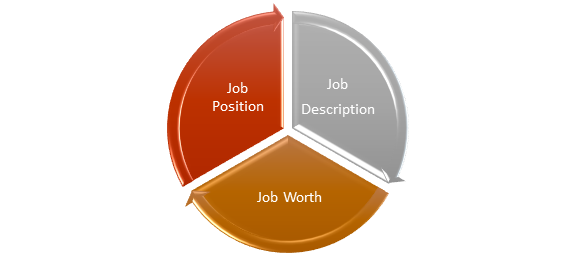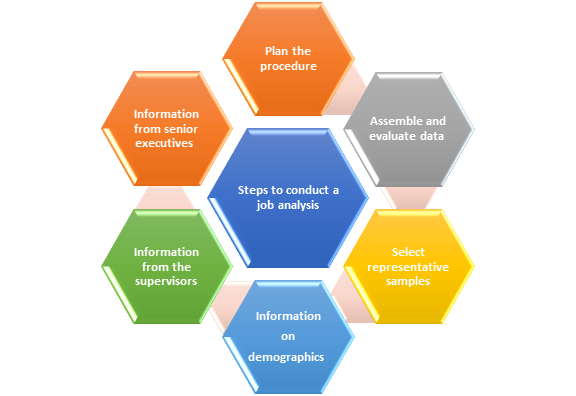Job Analysis
Updated on 2023-08-29T11:59:16.006808Z
What is a job analysis?
Job analysis is a way of acquiring and analysing data on the human requirements of tasks and the content and context in which they are performed. This method is often used to decide job placement.
It allows identifying job progression paths for workers who want to develop their careers and earn more money.
Summary
- Job analysis is the process of researching and gathering information on a job's operations and duties.
- Employees can better grasp their aims and objectives with the help of a job analysis.
- It outlined the emotional, physical, and linked human characteristics required to execute the work successfully.
Frequently Asked Questions (FAQs)
What is the significance of a job analysis?
To generate a legitimate job description, a systematic process of gathering all information about a specific job, including roles, skill requirements, procedures, and duties, is known as job analysis.
It also provides an outline of the emotional, physical, and related human attributes that are required to complete the work.
The best strategy to ensure that the proper candidate is chosen is to conduct a job analysis. It aids the employer in hiring and retaining employees, determining pay and benefits, and managing performance, among other things. It also provides employees with a clear image of what is expected of them.
Moreover, a job analysis yields a plethora of information on a particular position. Job competencies are established and clearly defined when the data collection for analysis is completed. As a result, they can be used across the talent process phases, from recruitment through pre-hire evaluation to the training program.

Source: © Alexandersikov | Megapixl.com
What elements make up a job analysis?
Job position
The remuneration system in the organisation is based on job status. High-paying occupations and job holders produce more returns than lower-paying occupations.
Description of the job
Each circumstance is unique since it necessitates different activities and responsibilities, such as varying levels of education, experience, and competence.
Worthy of a Job
The calculation of the worth of work in an organisation is referred to as work value. In other words, job value is a calculation of how much a job contributes to the organisation's goal.

Source: Copyright © 2021 Kalkine Media
What are the steps to conduct a job analysis?
Plan out the resources, the procedure, and the timeline
The key to success in job analysis is to plan. Determine the steps to be taken and the people and other resources involved in the process. Planning the procedure, resources, and timelines improves efficiency and ensure an accurate and comprehensive job analysis.
Assemble and evaluate data
The next stage is to collect data from various sources. Job ads from the past, present job descriptions, staff training materials, performance plans, and other human resources documentation are internal information sources.
Job ads, subject matter specialists, industry statistics, occupational research, performance standards, and internet staffing resources can provide information about the job. Establish standardised criteria for job evaluation after gathering all necessary data.
Select a representative sample of jobholders
Identify a group of employees who are now performing the work that new workers will be responsible for. It is critical to employ standardised criteria that have been defined based on the data obtained earlier. Depending on the job's complexity, the sample size fluctuates.
Obtain information about the job holders' demographics
Structured interviews are one of the most effective techniques to acquire demographic data. Obtain information on the employee's educational background, qualifications, work experience, and personal abilities. The sample job holders could track how things like previous experience helped them in specific scenarios or keep a performance diary for evaluation.
Obtain information from the supervisors of the jobholders
The supervisor has direct experience of individuals who performed well and went beyond expectations and the ones who failed to succeed, and the job's relationship to teamwork.

Source: Copyright © 2021 Kalkine Media
Obtain information from senior executives
At this point, the information obtained is more strategic. For example, senior managers have access to information regarding an employee's job performance in a specific department.
Make a list of job competencies and skills
Create a list of the skills and abilities that an employee requires to be successful in their profession. Job competencies can be evaluated to see how well someone will perform if hired. They include knowledge, responsibilities, tasks, capabilities, expertise, duties, skills, and any other traits critical to job success.
Choose and confirm the final list of competencies to utilise for different purposes after producing a preliminary list. For example, they are used to assist pre-hire assessment exams, create a job description, seek job candidates, assess performance, choose personnel, and identify training needs.
What are the benefits of conducting a job analysis?
- The specification and descriptions are clearly defined.
- Facilitates employees' understanding of their aims and ambitions.
- It can be used as a baseline for evaluating staff performance.
- Assist in the upkeep of the organisational structure.
What are the drawbacks of conducting a job analysis?
- It is not easy to address all aspects of the experience and job-related concerns.
- It is unable to forecast the future.